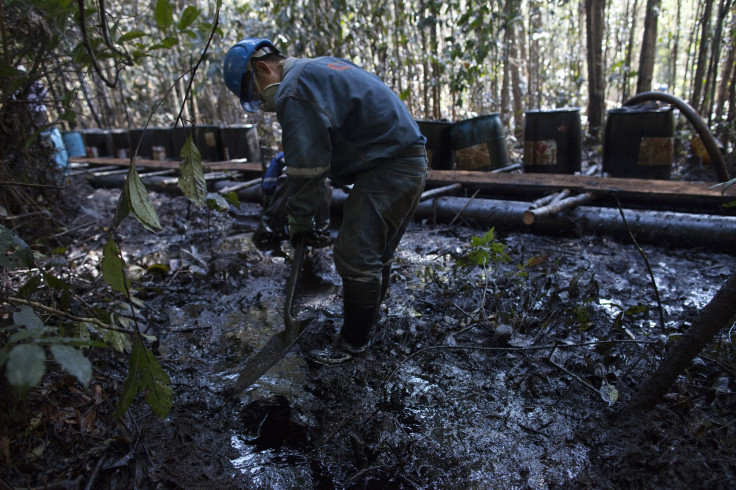Peru Oil Spill: Ruptures In Petroperu Pipeline Leaks At Least 3,000 Barrels Of Oil Into 2 Amazon Rivers

Two rivers in Peru that at least eight indigenous communities rely on for water have been polluted by an oil spill in the Amazonian region due to ruptures in the main oil pipeline of state-owned Petroperu. The ruptures have leaked at least 3,000 barrels of oil in the region and have halted the movement of 5,000 to 6,000 barrels of oil a day, Reuters reported, citing the company.
The oil has poured into the Chiriaco and Morona rivers in northwestern Peru, the country’s environmental regulator OEFA said, according to Reuters. The OEFA also said that if tests confirm that the oil spills, which occurred in January and February, caused health problems for locals, Petroperu could face fines of about $17 million. Peru’s health ministry declared a water quality emergency in five districts near the region of the oil spill, according to Reuters.
Petroperu, which operates the pipeline and also refines the oil, confirmed Monday the amount of oil spilled, and the company’s president German Velasquez said, according to Reuters, that it could take “some time” to resume operations. The pipeline that collapsed usually transports crude from block 192, which is operated by Pacific Exploration & Production Corp.
The amount of oil transported has reduced over the past few months to between 5,000 and 6,000 barrels a day amid falling oil prices, Reuters added.
The company also said, according to the BBC, that the first leak was caused by a landslide, but the reason for the second leak was still unclear. Efforts to stop the flow of the oil were becoming difficult because of heavy rains, local indigenous leader Edwin Montenegro told BBC. Footage from the area, shown on local news networks, show black sludge that has covered the jungle while rescue crews try to clean up by scooping out buckets of crude from the river.
Since the spill, the OEFA has ordered the company to replace parts of the pipeline and improve maintenance. "It's important to note that the spills ... are not isolated cases. Similar emergencies have emerged as a result of defects in sections of the pipeline," the OEFA said in a statement, according to Reuters.
The company is reportedly conducting an evaluation of the pipeline that was laid in the 1970s to prevent such spills. The process could reportedly take up to two months, Velasquesz said, according to Reuters. He also denied reports that the company hired children to clean up the spill, but said that four officials, one of whom may have allowed children to collect the crude, are being evaluated.
The spills come at a time when Petroperu has been getting ready to participate in oil production with a private partner after its mostly refining, commercializing and transporting operations for over two decades. The company also has plans of listing 49 percent of its operations on the Lima Stock exchange, Reuters reported.
The spill also comes amid increasing environmental awareness as several countries have signed an accord to minimize effects of climate change. In 2010, BP Plc's Deepwater Horizon rig exploded, killing 11 workers and spilling over three million barrels of crude oil into the Gulf of Mexico, off the coast of Louisiana. As a result, BP had to agree to pay 3 billion euros ($3.26 billion) only for criminal damages in 2012.
© Copyright IBTimes 2025. All rights reserved.






















